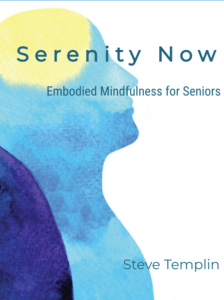A common strategy for quieting anxious thoughts is often more thinking in an attempt to control the mind. I’m going to suggest another, and predictably more fruitful approach, which involves your body.
Since anxiety (and stress) either contributes to the creation or exacerbation of most illness, having an effective and ready response to help neutralize anxiety is an essential skill.
Anxiety tends to produce unpleasant sensations in our bodies and we’re inclined to avoid those distressing feelings with some form of distraction. We can distract ourselves from anxious feelings with a variety of behaviors, like eating, TV, and shopping, or with mental efforts to control our thinking.
I’m going to offer an alternative strategy that involves becoming aware of your body. I’ll offer some simple steps and then in my next blog later this week I’ll expand on the process.
- To begin, bring to mind a situation in your life that triggers a mild to moderate experience of anxiety and note the degree of anxiety that you feel on a 1-10 scale (nothing past a 5 to keep this a safe exercise).
- Then do something very counter intuitive … actually ‘feel’ the anxiety. Yes … notice where and how the anxiety is felt in your body. The simple act of noticing where and naming ‘anxiety in my belly’, or ‘a nervous tension in my throat’ begins to restore neurological order to your system. As a result, you will most likely begin to feel better.
- Next, after noticing and naming what you feel, you can make sure that you’re not holding your breath … by breathing slowly. The addition of a slow, gentle breath … lasting about 5 seconds on both the exhale and inhale … will create more neurological balance in your system.
- The next step involves touching or tapping any area on your body … while you continue to breathe slowly and notice your bodily experience of anxiety. For example, you can alternately tap on both left and right knees … or touch your forehead in a soothing manner.
- After thirty seconds to a minute of this process reassess your level of anxiety. Again, you can note where you are currently using the 1-10 scale. If it’s decreased to any degree you can appreciate the positive shift in direction. Enjoy that change while you continue to breathe slowly for another thirty seconds.
The simple process that I’ve just described can significantly alter levels of the neurotransmitters serotonin and GABA … which play an important role in the reduction of anxiety. It’s simple, but does take a bit of guidance and practice for it to be done with ease … so don’t be discouraged if it wasn’t easy or effective on your first try.
Another neurological benefit from these simple steps is that your prefrontal cortex will be activated while your amygdala (the part of your brain that’s aroused by stress and threat) will be inhibited … all contributing to a greater sense of well-being and a return to more resourceful and creative thinking.
In the next blog I’ll talk more about the process and the science behind it.
Steven Templin, D.O.M., Dipl. Ac., is a Doctor of Oriental Medicine and nationally certified acupuncturist, specializing in Energy Medicine, Mind-Body Medicine, Diet and Nutrition to repair the Gut-Immune-Brain Axis, and Self-Regulation training.
In his Self-Regulation training program he shares the science and most importantly the effective practices for transforming physical health and emotional well-being. These practices will greatly enhance the effectiveness of any other therapeutic interventions.
He teaches and consults online, and sees patients at the Natural Medicine Center in Lakeland, Florida.
You can learn more about Dr. Templin and his healing program by visiting www.newmedicalmodel.com.


 Steve is a retired Doctor of Oriental Medicine, Acupuncture Physician, and HeartMath Trauma-Sensitive Certified Practitioner with over 35 years of clinical experience in the fields of Energy Medicine, Energy Psychology, and Biofeedback.
Steve is a retired Doctor of Oriental Medicine, Acupuncture Physician, and HeartMath Trauma-Sensitive Certified Practitioner with over 35 years of clinical experience in the fields of Energy Medicine, Energy Psychology, and Biofeedback. 